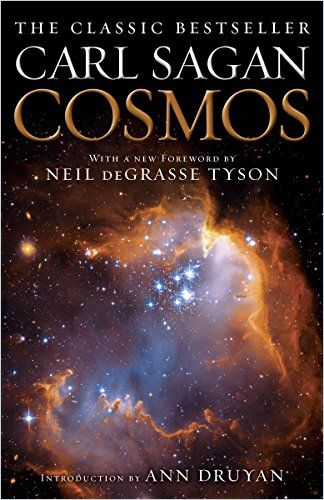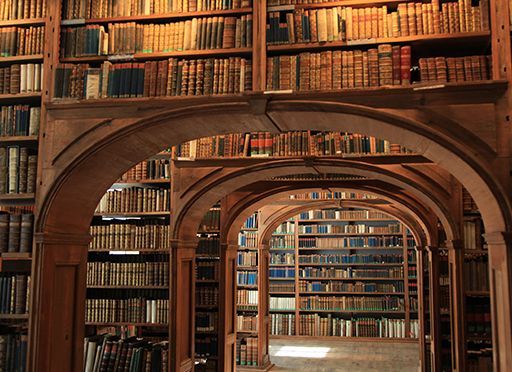Writer, professor, astronomer and NASA adviser Carl Sagan explains the universe and humanity’s place in it.

Passionate, Poetic Science
Renowned writer, professor, astronomer and NASA adviser, the late Carl Sagan – a lover of science and nature – was full of wonder. For decades, Sagan was outer space for readers and viewers everywhere. A best-selling author, a regular on talk shows and on his own broadcasts, Sagan became an Earth-bound Obi-Wan Kenobi, explaining and marveling at the universe for an audience that – over decades – grew up or grew older with Sagan as a constant presence. Sagan was a showman, too, and at times could appear slick or glib, but his passion for outer space and for persuading humans to take a more universal and less angry view of existence never lessened.
This classic provides a synthesis of existing scientific knowledge of cosmology. It’s also Sagan’s love letter to the universe: a heartfelt, engaging and poetic exploration in which he shares his love and knowledge through prose and an astonishing array of deep-space photographs, illustrations, charts and graphs.
Reviewers responded to Cosmos, as did the reading public, with great enthusiasm and approval. Newsday wrote, “Sagan is an astronomer with one eye on the stars, another on history, and a third – his mind’s – on the human condition.” And The New York Times Book Review found Cosmos, “Enticing…iridescent…imaginatively illustrated.”
Sagan was a prolific author. The foremost among his worthwhile books, if you want something to accompany Cosmos, is Billions and Billions. The best places to start for ancillary readings by other writers would be Brief Answers to Big Questions by renowned physicist Stephen Hawking and Letters from an Astrophysicist by Neil deGrasse Tyson, the heir apparent to Sagan’s mantle as the go-to explainer of the cosmic incomprehensible to an audience of laypeople.
Cosmic Connection
Sagan begins by reminding readers that ancient peoples thought their daily lives intertwined with the larger cosmos.
Our ancestors were eager to understand the world but had not quite stumbled upon the method.Carl Sagan
He laments that people do not feel close to the universe today, even though they have a superior method for understanding it: science. Sagan believes that when people understand science, they gain a sense of wonder. He, like many scientists, finds moving poetry in scientific theories and discoveries.
A Tiny Dot
The cosmos is everything that exists. Sagan preaches that humanity’s future depends on how well it understands the cosmos. He returns often to a touchstone: He doubts that Earth is the only planet holding life. At the same time, Sagan recognizes that the biochemistry of evolution on Earth may be unique.
Laws of Nature
Sagan explains that people live in a world that constantly changes, but that “laws of nature” – like gravity – govern all activities. He tells how ancient people read the sky to know when to hunt and harvest. Tracking the stars, Sagan accepts, led to a belief in astrology, which, the author asserts, is not science.
Sagan cites astrologers who were astronomers, such as Ptolemy, who lived in the second century and imagined the planets resting in spheres surrounding Earth. In 1543, Nicholas Copernicus posited the sun as the center of the universe. Isaac Newton, whom Sagan regards with awe, discovered inertia and gravity.
Time
Always seeking ways to make space comprehensible, Sagan compares space travel to early explorers who needed months to cross to America from Europe. He posits that spaceships could fly from Earth to Jupiter in one to two years, the time it took to sail from Holland to China in the 17th century. Sagan connects early exploration to new wealth in Europe, which fueled knowledge. He honors Holland for the development of the telescope and the microscope, which Sagan lyrically presents as extending the reach of the human senses.
Among many mind-boggling numbers, Sagan recounts that it takes light 30,000 years to travel from our sun to the center of the Milky Way. Travel from humanity’s home galaxy to the closest spiral galaxy, M31, would take light two million years. Voyager spacecraft travel at 1/10,000 as fast as light and would need, Sagan reveals, 40,000 years to reach the closest star.
What is magic about the speed of light?Carl Sagan
Evoking Einstein’s theory of special relativity, Sagan reports that time would slow for space travelers while moving at the usual pace back home. If a spaceship could accelerate at the force of one Earth gravity, Sagan reveals that it could travel to distant stars in a few subjective years. For example, such a ship could reach the center of the Milky Way in 21 years. However, the author reminds readers, 30,000 years would pass back on Earth.
The Big Bang
Sagan grapples with a subject confusing to most laypeople: the Big Bang, which happened 10 to 20 billion years ago. The author alludes to all energy and matter in a dense form, like a “cosmic egg.” After the Big Bang, the universe expanded in all directions. Sagan turns to the Doppler Effect – which shows galaxies moving away from Earth – to certify the Big Bang. The author revels in the mystery of whether the universe will expand continually or collapse on itself.
Violence
Sagan regards the human tendency to violence as its most dangerous evolutionary holdover.
The Earth is a tiny and fragile world. It needs to be cherished.Carl Sagan
The author returns to his theme of existence springing from a particular and random cosmic history. A few million years ago, humans didn’t exist. Sagan asks poignantly: Will there be humans in a few million years more? The author urges people to recognize their commonalities, embrace science and commit to exploring the cosmos.
Passion
Sagan is passionate, articulate, voluble and apparently inexhaustible. He writes like an evangelist, anxious for everyone to find the same wonder and joy he finds in the stars and in Earth’s evolution. At times his prose might wear you out; other times it might make your heart sing. Sagan has a mission: to instill in you the thrill he finds in outer space and in the science that reveals its inherent mysteries. He achieves this mission for children and adults. And, if you don’t feel like reading, the visuals of Cosmos will enthrall you.






